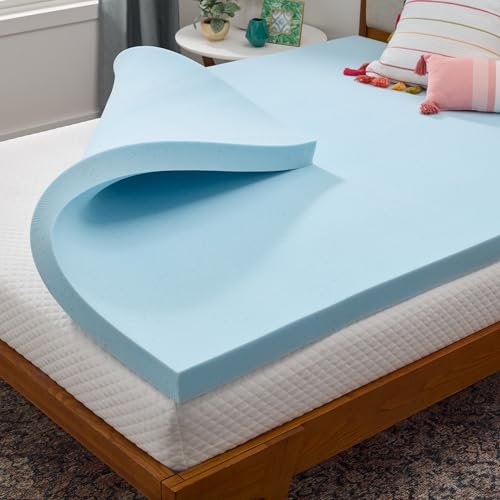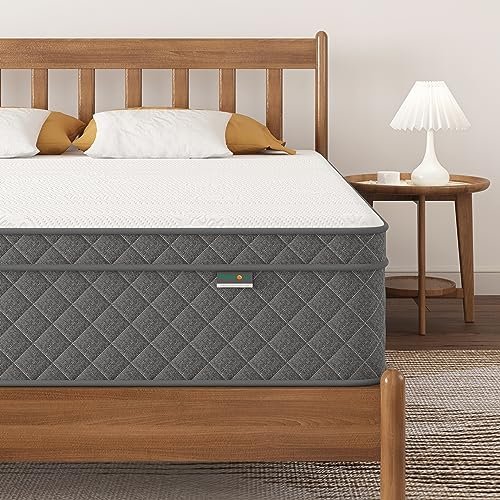
What Kind of Bed Frame for an Adjustable Base? Your Ultimate Guide to Compatibility and Comfort
So, you’ve decided to elevate your sleep experience with an adjustable base – congratulations! These incredible foundations offer unparalleled comfort, from relieving pressure points to easing snoring, and even making reading or watching TV in bed a dream. But now comes the question that puzzles many: what kind of bed frame do you need for an adjustable base?
Fear not, navigating the world of adjustable base compatibility is simpler than it seems. This comprehensive guide will walk you through everything you need to know, ensuring your new sleep setup is both functional and stylish.
First Things First: Understanding Your Adjustable Base
Before we dive into frames, it’s crucial to understand what an adjustable base actually is. Your adjustable base is the foundation for your mattress. It’s a self-contained unit that houses the motors and mechanisms that allow your head and foot sections to articulate. Most adjustable bases are designed to be robust and fully supportive, meaning they can function perfectly well on their own, often with legs attached.
This key distinction is important: the adjustable base itself provides the structural support for your mattress and you. A traditional bed frame, if used, will primarily serve an aesthetic purpose or provide a boundary for your adjustable base.
The Core Question: Do You Even Need a Traditional Bed Frame?
The short answer is: not always! Many people are perfectly happy using their adjustable base with its included legs as a standalone unit. This offers a clean, modern look and often maximizes under-bed storage.
However, if you love the look of a traditional bed, want a headboard, or prefer to conceal the mechanisms of your adjustable base, then a bed frame is definitely an option. The key is choosing the right kind of frame.
What Kind of Bed Frames Work with an Adjustable Base?
When it comes to combining your adjustable base with a decorative frame, you generally have three excellent options:
Option 1: The Headboard-Only or Decorative Frame (The Easiest Route!)
This is often the most straightforward and popular choice. In this setup, your adjustable base sits inside a decorative bed frame that consists of a headboard, footboard, and side rails.
- How it Works: The adjustable base, with its own legs, sits independently within the perimeter of the decorative frame. The frame provides no structural support to the adjustable base itself; it’s purely for aesthetics.
- Key Benefit: Max flexibility. You can often use many existing bed frames this way, as long as they meet specific clearance requirements.
- What to Look For:
- Internal Dimensions: The frame must be large enough to fully contain your adjustable base.
- Clearance: There must be enough space between the side rails and footboard to allow the adjustable base to articulate fully without bumping into anything.
- Headboard Attachment: Many adjustable bases come with brackets to attach a headboard directly to the base itself, rather than to the decorative frame.
Option 2: Platform Bed Frames (with Modifications)
Platform beds, which are typically designed with a solid surface or slats to support a mattress directly, can sometimes be adapted for an adjustable base.
- How it Works: You would remove all slats, center supports, and any other internal obstructions from the platform frame. Your adjustable base, with its legs, then sits down inside the now-empty cavity of the platform frame.
- Key Benefit: If you love the look of a specific platform bed, it might be adaptable.
- What to Look For:
- Sturdy Outer Frame: The platform frame needs to have robust side rails and a footboard that can stand alone after removing internal supports.
- Internal Dimensions: Crucially, the internal space must be large enough to accommodate the full dimensions of your adjustable base, including its motors and mechanisms, and allow for articulation.
- Height: Ensure there’s enough vertical space for the adjustable base and its moving parts.
- Important Caveat: Not all platform beds are suitable. If removing the internal supports compromises the integrity of the frame, or if there isn’t enough internal clearance, it won’t work.
Option 3: Dedicated “Adjustable Base Compatible” Bed Frames
Some manufacturers offer bed frames specifically designed to work seamlessly with adjustable bases.
- How it Works: These frames are built with an open interior, typically without slats or support beams, specifically to house an adjustable base. They often have wider internal dimensions and better clearance.
- Key Benefit: Designed for ease and guaranteed compatibility. You won’t have to worry about removing parts or measuring as meticulously.
- What to Look For: The product description will explicitly state “adjustable base compatible” or similar language.
Step-by-Step Guide to Pairing Your Adjustable Base with a Frame
Ready to get started? Follow these steps to ensure a perfect fit:
Step 1: Measure Your Adjustable Base Thoroughly.
* Length and Width: Measure the exact length and width of your adjustable base.
* Height: Measure the total height of your adjustable base from the floor to its top surface when the legs are attached. This will impact your overall bed height.
* Under-Base Clearance: Measure the distance from the floor to the bottom of the adjustable base’s frame, especially where the motors or mechanisms are located. This is vital for frames with low side rails.
Step 2: Measure Your Desired Bed Frame’s Internal Dimensions.
* Internal Length and Width: Measure the inside dimensions of the bed frame where the mattress/base would sit.
* Height of Side Rails: Measure from the floor to the top of the side rails.
* Under-Rail Clearance: Measure from the floor to the bottom edge of the side rails. This determines if the adjustable base’s mechanisms will rub or be obstructed.
Step 3: Compare and Check for Critical Clearance.
* Length & Width Fit: Your adjustable base’s length and width must be less than the internal length and width of the bed frame. You need a little wiggle room – ideally 0.5 to 1 inch on all sides – to allow for articulation and easy placement.
* Vertical Clearance: The height of your adjustable base (especially the bottom where the motors are) must be less than the height of the frame’s side rails/footboard. More importantly, ensure the base can articulate fully without hitting the headboard, footboard, or side rails. Test by raising and lowering the head and foot sections.
Step 4: Remove Obstructions (If Using a Platform Frame).
* If you’re using a platform bed frame, carefully remove all slats, center support beams, and any other internal structures. These are no longer needed and will interfere with the adjustable base’s operation. Store them safely in case you ever want to revert to a traditional mattress.
Step 5: Assemble the Decorative Frame.
* Assemble your chosen bed frame according to its manufacturer’s instructions, ensuring it’s sturdy and level.
Step 6: Position the Adjustable Base.
* Carefully move your adjustable base into the assembled decorative frame. Ensure it sits evenly and has enough space around its perimeter.
Step 7: Attach Headboard Brackets (Optional).
* If your adjustable base has headboard brackets and you wish to attach your headboard directly to the base (rather than relying on the decorative frame), now is the time to do so. This can provide a more stable connection for the headboard.
Step 8: Test Full Articulation.
* Place your mattress on the adjustable base. Before getting into bed, run the adjustable base through its full range of motion (raise and lower both head and foot sections completely). Watch carefully to ensure no part of the base or mattress rubs, scrapes, or gets stuck on the bed frame. If it does, you may need a different frame or more clearance.
Important Tips for Success
- Always Consult Manufacturer Specifications: This is paramount. Both your adjustable base and your chosen bed frame will have specific requirements and recommendations. Do not guess!
- Prioritize Clearance Above All Else: A bed frame that looks great but restricts your adjustable base’s movement is a waste of money. Ensure ample space for full articulation.
- Consider Overall Bed Height: Adjustable bases tend to be taller than traditional foundations. Add the height of your adjustable base’s legs, the base itself, and your mattress to get your total bed height. Make sure this works for your comfort and aesthetic preferences.
- Weight Capacity is Key (for the base, not the frame): Your adjustable base has its own weight capacity (for the mattress and sleepers). The decorative bed frame is NOT meant to support the adjustable base; it’s purely for looks.
- Attachment Options: Some adjustable bases have built-in headboard brackets. If your decorative frame comes with its own side rail/headboard connection system, you may or may not use it, depending on your base’s setup.
Common Mistakes to Avoid
- Buying a frame without measuring: This is the most common mistake! Always, always measure.
- Forgetting to remove slats from a platform frame: Leaving slats in can damage your adjustable base’s mechanisms or prevent it from moving properly.
- Choosing a frame that’s too snug: Even if the base technically “fits,” if there isn’t enough room for articulation, you’ll be frustrated.
- Assuming all bed frames are compatible: Many traditional frames are simply not designed with the internal space or clearance needed for an adjustable base.
- Relying on the decorative frame for structural support of the adjustable base: The adjustable base is self-supporting. The decorative frame is merely a shell.
- Ignoring the overall bed height: A bed that’s too high can be difficult to get into and out of.
Conclusion
Choosing the right bed frame for your adjustable base doesn’t have to be a headache. By understanding that your adjustable base is the primary foundation and that the decorative frame is largely for aesthetics, you can confidently select an option that fits your style and allows your adjustable base to perform its best.
With careful measurements, attention to clearance, and these helpful tips, you’ll be well on your way to enjoying the ultimate in personalized comfort and a beautifully designed bedroom. Happy sleeping!
Frequently Asked Questions(FAQ)
Q. Can I use any bed frame with an adjustable base?
A. No, not all bed frames are compatible with adjustable bases. Adjustable bases require a frame that can accommodate their structure and movement without hindering their function. Open-cavity frames or those with sturdy side rails are generally best.
Q. What types of bed frames are generally compatible with an adjustable base?
A. The most compatible bed frame types are those with an open cavity, such as platform bed frames (without a solid slat system), sleigh beds, or traditional bed frames with side rails and a headboard/footboard that allow the adjustable base to sit inside without its moving parts getting obstructed. Many modern “bed-in-a-box” style frames are also designed to be compatible.
Q. What should I look for in a bed frame to ensure it’s compatible with an adjustable base?
A. Look for a frame that has sturdy side rails and potentially a headboard/footboard, but no center support beams or slats that would interfere with the adjustable base’s movement or placement. The frame should provide an open space for the adjustable base to sit directly on the floor (if it has legs) or to rest on sturdy support rails within the frame. Ensure the internal dimensions precisely match your adjustable base size.
Q. Do I need to remove the slats from my existing bed frame if I want to use an adjustable base?
A. Yes, in most cases, you will need to remove the slats and any cross-supports from your existing bed frame. An adjustable base is a self-contained unit designed to provide its own support for the mattress and needs to sit directly inside the frame’s perimeter, often resting on the floor (if it has legs) or dedicated support ledges.
Q. Can I use my adjustable base with just a headboard, without a full bed frame?
A. Yes, many adjustable bases are designed to be freestanding units and can be used on their own with just a headboard attached. Most adjustable bases come with brackets to attach to a standard headboard, providing the look of a complete bed without the need for a footboard or side rails.
Q. What is a “zero clearance” adjustable base, and does it affect frame compatibility?
A. A “zero clearance” adjustable base is designed so that all its moving parts are contained within the base itself, allowing it to sit directly on a flat surface or a solid platform bed frame without needing space underneath for articulation. This makes it highly compatible with more enclosed or platform-style bed frames, as long as the frame’s surface is sturdy enough to support the base and mattress.
Q. How do I attach a headboard to my adjustable base if it doesn’t have a full frame?
A. Most adjustable bases include or offer separate purchase of headboard brackets. These brackets typically attach to the end of the adjustable base (where a headboard would go) and then bolt directly to the legs or frame of your headboard. This allows you to secure the headboard without needing a full bed frame.
Q. Are there specific weight limits I should consider for the bed frame when using an adjustable base?
A. While the adjustable base itself supports the mattress and sleeper, the bed frame’s primary role is aesthetic and to contain the base. Therefore, the weight limit of the frame is less critical for support of the mattress, but it should still be sturdy enough to contain the adjustable base without bowing or breaking, especially if the base relies on the frame’s side rails for support (which is less common, as most bases are self-supporting). Always check the manufacturer’s recommendations for both the adjustable base and the bed frame.
Q. Can an adjustable base fit inside a platform bed frame?
A. Yes, many adjustable bases are designed to fit inside platform bed frames, provided the platform frame has an open interior or can have its existing slats/supports removed to create an open cavity. The key is that the adjustable base needs to sit either directly on the floor (if it has legs) or on sturdy support ledges within the frame, without its moving parts being obstructed by the frame’s structure.
Related Articles
7 Top Full Size Bed Frames: What is the Dimensions of a Full Size Bed Frame and More!
Getting a good night’s sleep often starts with the right bed, and for many, a full-size bed is the perfect sweet spot between a twin and a queen…
How Much Is a King Size Sleep Number Smart Bed
How Much Is a King Size Sleep Number Smart Bed? Your Guide to Understanding the Investment Recommended Product: Select Comfort Air Bed Chamber for Sle…
How Much Does a Sleep Number 360 Smart Bed Cost
How Much Does a Sleep Number 360 Smart Bed Cost? Recommended Product: Sven & Son Classic Adjustable Bed Base — head and foot lift, massage, under-…



